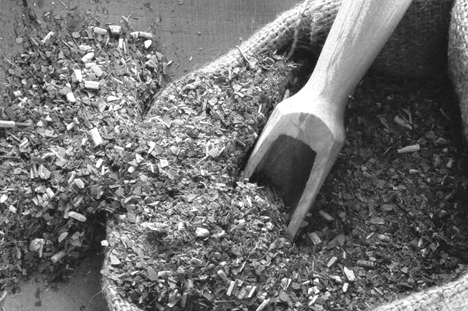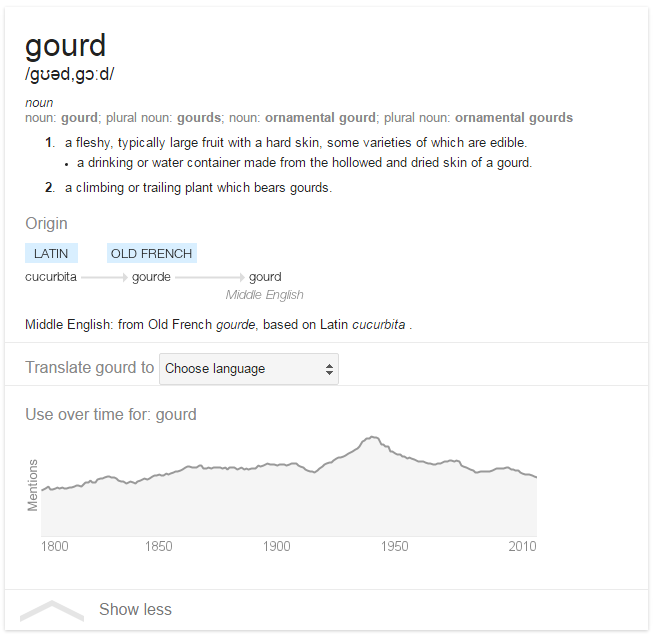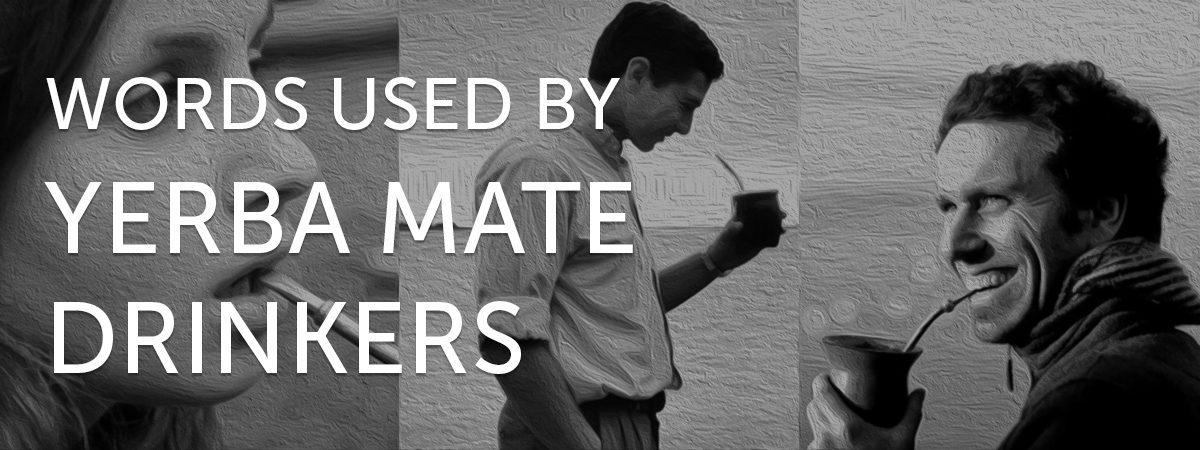A friend was introduced to Yerba Mate not long ago. He started drinking Yerba Mate to combat his afternoon productivity slump at the office. English isn’t his native language and naturally, a few people around the tea point in the office started asking him questions about his Yerba Mate gear.
He informed me that the exact sentence he used to describe his Gourd and Bombilla was:
It is this “thing” to sip the tea from
His colleagues raised an eyebrow and were intrigued. My shy friend however, did not enjoy the attention and made a quick dash to his desk by the window.
If unlike my friend there, you don’t mind the attention and would like to describe your Yerba Mate experience in better terms than a “thing to sip the tea from” then read on. In this post, we look at words used by Yerba Mate drinkers (Materos and Materas) around the world.
Yerba Mate
Amargo
“Mate Armargo” simply means mate with no additives such as sugar, sweet syrup, dried fruits …etc.
Canchada
This is a type of Yerba Mate cut. Canchada is a coarse grind cut of dried yerba mate leaves and tender stems that are prepared for aging after the first milling.
Cimarrones
This is another word for Mate Amargo, So Yerba Mate that is without sugar. In Portuguese (Brazil) it is called “Cimarrao”.
Lavado
When the Yerba Mate becomes “Lavado”, it simply means it is washed out. After an x-number of cycles of topping up the Yerba Mate with water, it loses all taste and you’ll be simply sipping water. It is at this time that the server ought to make a fresh serving of Yerba Mate.

Number of Cycles
A cycle represents the amount of time it takes for the Yerba Mate to become Lavado (washed), and lose its taste.
The number of cycles will very much depend on how much Yerba Mate you are using and how large your Yerba Mate gourd is, but if you stick to the same gourd and same amount of Yerba Mate in each serving, then you can compare Yerba Mate brands.
Dulce
“Mate Dulce” means something sweet has been added to the Yerba Mate. This is most commonly regular sugar, but it can be sweet syrups too. The sugar is usually added before the hot water is added.
Palos
Small white twigs that are included in the mate to enhance its flavor makes the mate sweeter and smoother in my experiences.
Con Palos
This simply means the Yerba Mate is with Palos (twigs). Con Palos Yerba Mate tastes sweeter.
Sin Palos
Opposite of Con Palos, “Sin Palos” means the Yerba Mate does not have Palos (twigs). Yerba Mate is usually harsher in taste when Sin Palos.
Despalada
This means “mate without stems”. It is synonymous with “sin palos”.
Gaucho
“Gaucho Mate” is usually very strong, intense Yerba Mate that is typical of Southern Brazil and Uruguay.
Polvo
This is the green powder present in Yerba Mate bags. Because of the milling process of the plant, all Yerba Mate comes with powder. The amount of Yerba Mate powder is brand dependent as each company makes its own ratio of leaves, stems and powder. The Yerba Mate Polvo plays an important role in the taste profile of Yerba Mate. It can make your Yerba Mate strong, well-balanced or mellow.
Polvo also helps hold the mate together and increases the Yerba Mate’s cycle. Gourmet and high-quality brands have just the right amount of Polvo for the target customers. Our Native Leaf Original, for example, is targeted at European customers and as such, it has a sweet mellow taste profile.
Mate cocido
Mate Cocido is a Yerba Mate that is prepared by adding Yerba Mate to water and bringing the water to boil, then pouring the Yerba Mate into a cup with a strainer to filter out the leaves and sticks. Sugar can be added if one has a sweet tooth.
Modern versions have moved the Yerba Mate into tea bags for convenience, though these as with other teas, do not taste as good.
Accessories
Gourd
Doing a Google search for the meaning of the word Gourd brings the following:

In Yerba Mate circles, a gourd specifically refers to the bullet point under definition one.
a drinking or water container made from the hollowed and dried skin of a gourd
It is what Yerba Mate is traditionally drank in across South America. The calabash (in squash family) plant is hollowed and dried to create the gourd to drink yerba mate out of. It is is also know as “mate” in Argentina and Uruguay.
Algarrobo
Algarrobo refers to the type of wood some Yerba Mate gourds are made of. The wood is also known as carob. Alagarrobo gourds are reddish-brown in colour. They are common in Argentina.
Bombilla
A Bombilla is a metal straw with a filter on the end used to traditionally drink mate out of the gourd. They come in different sizes and shape. They can be long, short, curved. The filters at the end can also have many different designs. Some Bombillas come with a double-filter, which means there are two layers of filter applied.
Palo Santo
Palo Santo’s literal meaning is “Holy Stick”. The term refers to the wood used to make certain wooden Yerba Mate gourds. Palo Santo wood has a very sweet and smokey scent, and often imparts of pine-like taste to the mate.
Palo Santo is one of the most-dense woods in the world, found commonly in the Argentina-Paraguay-Boliva border. The resin is said to have skin healing properties. Palo Santo’s botanical name is: Bulnesia sarmientoi.
The Circle of Friends
Cebador
This is the person who prepares and serves the mate. Each time someone is finished with their mate in a traditional mate circle, the gourd is passed back directly to the cebador (server); then he, and only he, passes the mate on to the next person.
Mate Yuyos
Mate Yuyos, pronounced shoe-shows is Yerba Mate that contains various herbs such peppermint, cilantro, mint, chamomile …etc.

